My Pro Cleaning Guide: Ditch the Chemicals & Make Cleaners That Actually Work
For the first few years of my professional cleaning career, I was surrounded by the harsh fumes of bleach and ammonia. Honestly, I thought that was just the price of a truly clean home. My hands were always a wreck, and headaches were my constant afternoon companion.
In this article
The real wake-up call came at a client’s house. Her little boy had severe asthma, and she gently asked if I could use non-toxic cleaners. I’ll admit, I was skeptical. My training screamed that you needed heavy-duty chemicals to properly sanitize a space. But I respected her and dove into some serious research. That moment changed everything for my business and, frankly, for my health.
What I found was that a handful of simple, dirt-cheap ingredients could clean just as well—and sometimes even better—than the commercial stuff. It just takes a little know-how and the right technique. These aren’t just internet hacks; they are the tried-and-true methods I’ve perfected in countless homes.
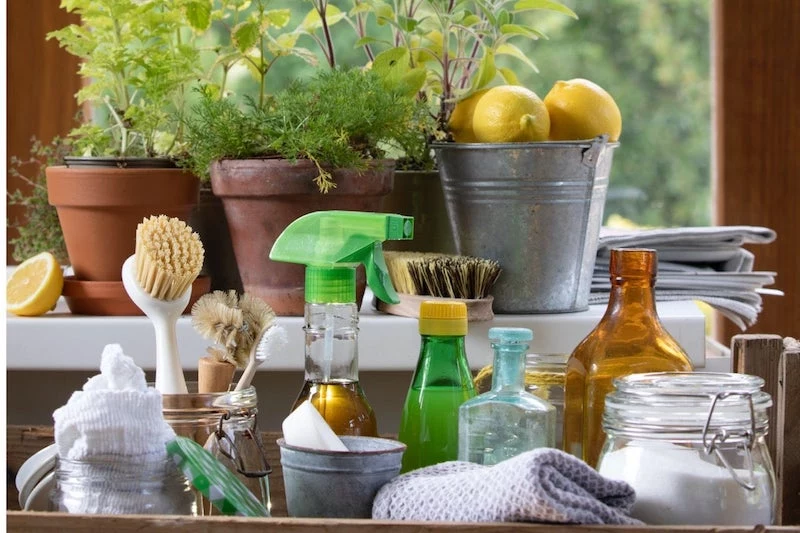
Want to see the power for yourself right now? Go sprinkle some baking soda in your kitchen sink, add a splash of white vinegar to make it fizz, and give it a quick scrub with a damp sponge. Five seconds to a sparkling sink! See? Let’s get into the good stuff.
Your DIY Cleaning Starter Kit (And It’s Cheaper Than You Think)
Before we get into recipes, let’s talk about your toolkit. Knowing why these ingredients work is the secret to using them like a pro. And the best part? You can get everything you need for about $25.
- Distilled White Vinegar: The acidic workhorse. You can grab a huge jug for about $3-4 at any grocery store. Make sure it’s distilled—tap water has minerals that can leave spots.
- Baking Soda: A gentle abrasive and a fantastic odor-eater. A standard box is usually just over $1 in the baking aisle.
- Washing Soda: Think of this as baking soda’s tougher, grease-fighting cousin. You’ll find it in the laundry aisle, not the baking aisle! A box costs around $4-5 and will last you ages.
- 3% Hydrogen Peroxide: Your bleach-free whitener and disinfectant. It’s always in a brown bottle for a reason (more on that later). It costs about $1-2 at any pharmacy or supermarket.
- Castile Soap: A true, plant-based soap that lifts dirt away. Dr. Bronner’s is a popular brand, but any true castile soap will do. A bottle might seem pricey at $10-15, but you use it by the drop, so it lasts for a very long time.
- Rubbing Alcohol (70% Isopropyl): The key to streak-free shine. A bottle is usually $2-3.
That’s it. For around $25, you have a powerful, versatile cleaning arsenal that can tackle almost anything in your home.

Understanding Your Ingredients
Okay, let’s break down what each of these does. It’s like chemistry, but way more satisfying.
Distilled White Vinegar
Vinegar is an acid, which is why it’s a cleaning powerhouse. It’s fantastic for dissolving alkaline things, like the mineral deposits from hard water. You know that crusty white stuff on your faucet? That’s what vinegar is born to destroy. It also cuts right through soap scum. A quick heads-up: while it has some antimicrobial properties, it’s not an EPA-registered disinfectant. So, don’t rely on it to kill serious germs like salmonella on a cutting board after you’ve handled raw chicken. Use a proper disinfectant for that.
Baking Soda
Baking soda is a mild alkali, the gentle opposite of vinegar. Its magic comes from two things: it’s a super-fine abrasive that can scrub surfaces without scratching, and it neutralizes acidic odors (like that weird smell in the back of the fridge). When you mix it with vinegar, you get that fun, fizzy volcano. That bubbling is carbon dioxide gas, and the physical action helps lift grime from surfaces, especially in drains. But remember, the real cleaning power comes from the ingredients themselves, not just the fizz.
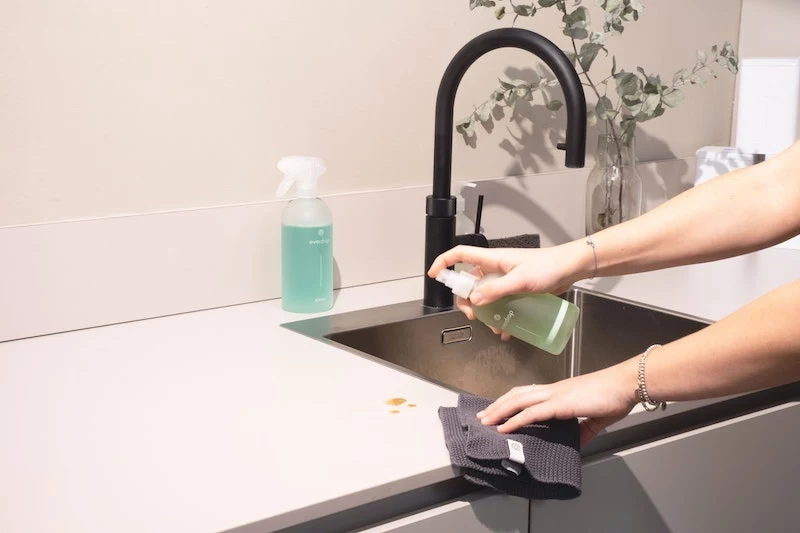
Washing Soda
This is what I bring out for the big, greasy jobs. It’s much more alkaline than baking soda, making it a serious degreaser for things like oven hoods and sticky cabinet tops. Safety first: Always, and I mean ALWAYS, wear gloves when you use this stuff. It’s caustic and will irritate your skin. I learned that lesson the hard way early on and had red, raw hands for a day. Respect its power!
Hydrogen Peroxide (3% Solution)
This is my go-to for whitening tile grout and disinfecting in a way that’s much gentler than chlorine bleach. It works through oxidation, releasing an oxygen molecule that breaks down stains and kills germs. Here’s a lesson I learned: Hydrogen peroxide breaks down into plain water when it’s exposed to light. That’s why it’s sold in a dark brown bottle. I once moved some to a clear spray bottle for convenience, and a week later, it was totally useless. Keep it in its original bottle and just screw a spray nozzle on top if you need to.
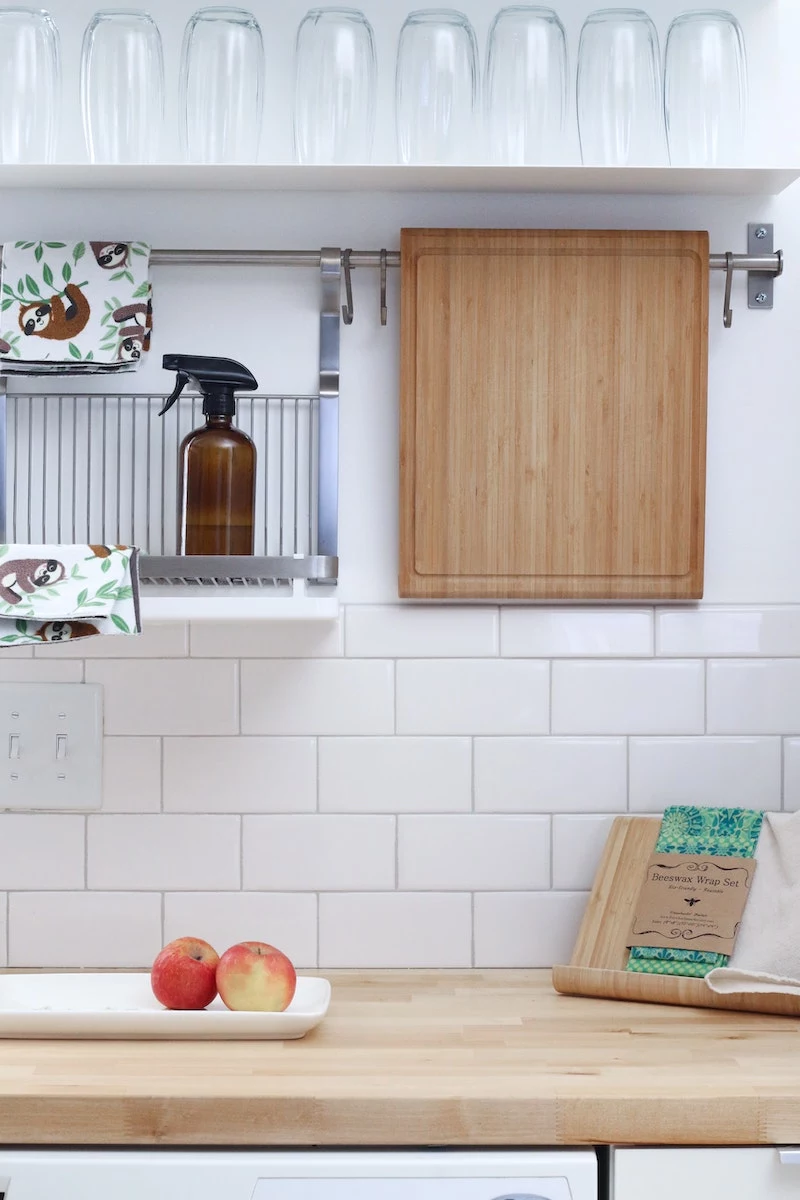
Castile Soap
This is a real soap made from vegetable oils. It’s a surfactant, which is a fancy way of saying it makes water “wetter.” It breaks the surface tension, allowing water and soap to get underneath dirt and grease and just wash it away. My first apprentice always used way too much, which leaves a sticky film that actually attracts more dirt. You literally only need a few drops in a whole spray bottle. If you see lots of suds, you’ve probably used too much.
The Right Tools for the Job
Your cleaners are only as good as your tools. Investing a few bucks in quality gear makes a world of difference.
- Glass Spray Bottles: I pretty much only use glass bottles for anything with vinegar. Over time, acid can break down cheap plastic. Label every single bottle with a permanent marker. You do not want to grab your degreaser to clean a mirror. I get mine online or at stores like Target for about $3-5 each.
- Color-Coded Microfiber Cloths: This is a non-negotiable rule in my business to prevent cross-contamination. My system is easy: Blue for glass, green for general surfaces, yellow for kitchen, and red for the bathroom. That way, a toilet cloth never, ever touches a kitchen counter. Good microfiber (look for “split-weave” on the packaging) grabs dust instead of just pushing it around.
- A Good Squeegee: The secret to truly streak-free glass. Spend $10-15 on one with a quality, replaceable rubber blade. The cheap dollar-store ones will just leave you frustrated and full of streaks.
- Detail Brushes: An old toothbrush and a dedicated grout brush are perfect for getting into all the nooks and crannies around faucets and in tile lines.
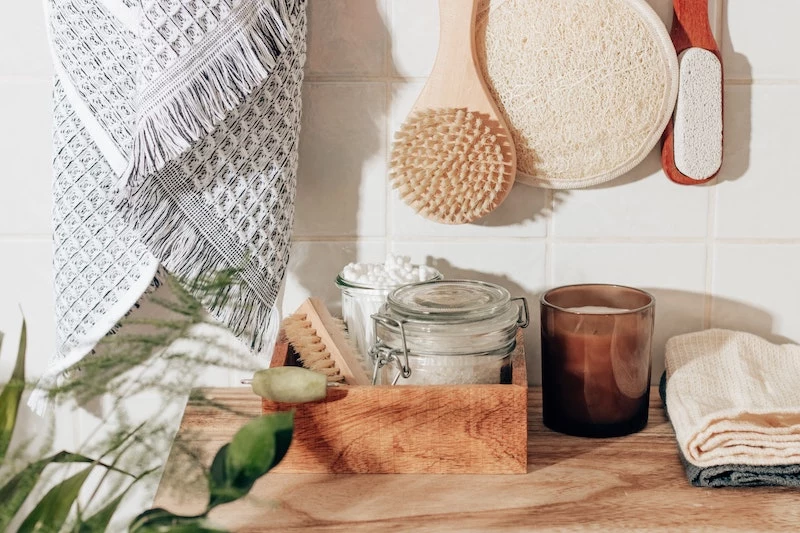
My Core Recipes: Field-Tested & Ready to Go
Here are the workhorses. I’ve tweaked these over the years to get them just right. To make it simple, here’s a quick guide:
- For everyday smudges and counters: The All-Purpose Cleaner is your best friend.
- For greasy, sticky kitchen messes: You’ll need the Heavy-Duty Degreaser.
- For sparkling, streak-free windows and mirrors: The Glass Cleaner is what you want.
1. The Everyday All-Purpose Cleaner
This is my go-to for about 80% of daily cleaning tasks. It’s a champ.
- Recipe: In a 16-ounce glass spray bottle, combine 1 cup of distilled water and 1 cup of distilled white vinegar. Add about 1/2 teaspoon of Castile soap.
- Pro Tip: Add the water first, then the vinegar, and the soap last. If you put the soap in first, you’ll have a bottle full of foam when you add the water. Gently swirl to mix; don’t shake it like a cocktail.
- Shelf Life: This mix is stable and will last for a few months.
- DO USE ON: Laminate counters, tile, painted walls, baseboards, and inside the fridge.
- DEFINITELY DON’T USE ON: This is critical. The acid in vinegar will damage some surfaces. Never use this on marble, granite, or any unsealed stone. It will etch the surface, leaving a permanent dull spot. Also, keep it away from unsealed grout and electronic screens.
A Quick Word on Pets & Scents: You can add 10-15 drops of essential oil for scent, but please be careful if you have pets. Many oils, especially tea tree, citrus oils, and peppermint, can be toxic to cats and dogs. To be completely safe, I’d recommend either skipping the oils or looking into pet-safe hydrosols instead.
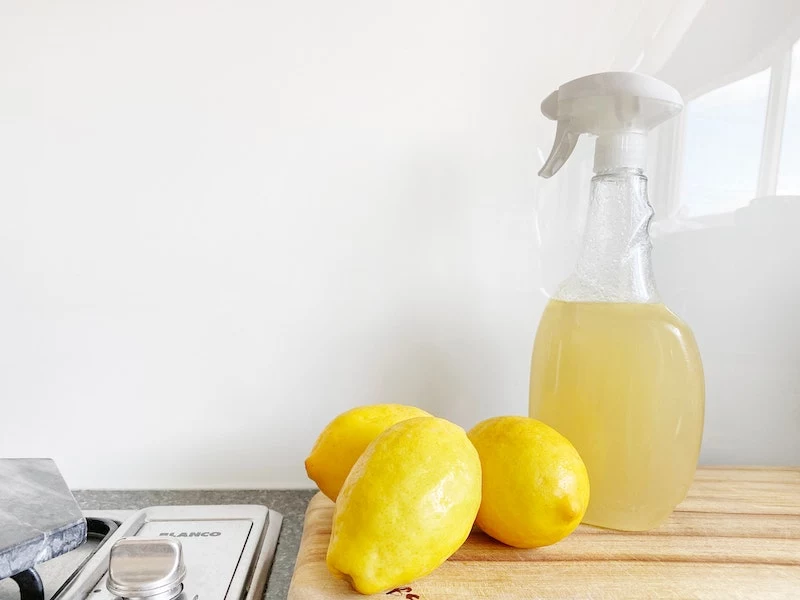
2. Heavy-Duty Kitchen Degreaser
For that sticky film on top of your cabinets or a greasy stovetop, you need to bring in the alkaline power.
- Recipe: In a spray bottle, dissolve 1 teaspoon of washing soda and 1/2 teaspoon of Castile soap in 2 cups of hot water. Swirl until the powder is fully dissolved.
- Technique: Spray it on the grease and let it sit for at least 2-5 minutes. This “dwell time” is everything; it lets the cleaner do the work for you. You’ll see the grease start to look like it’s melting. Then, just wipe it away with a damp microfiber cloth.
- Shelf Life: Because of the washing soda, this is best used fresh. I just mix up what I need for the job.
- My Experience: I once cleaned a rental where the vent hood was coated in a thick, yellow, sticky mess. I sprayed this on, waited 10 minutes, and the grease literally wiped off in sheets. It was one of the most satisfying moments of my career. And don’t forget your gloves!
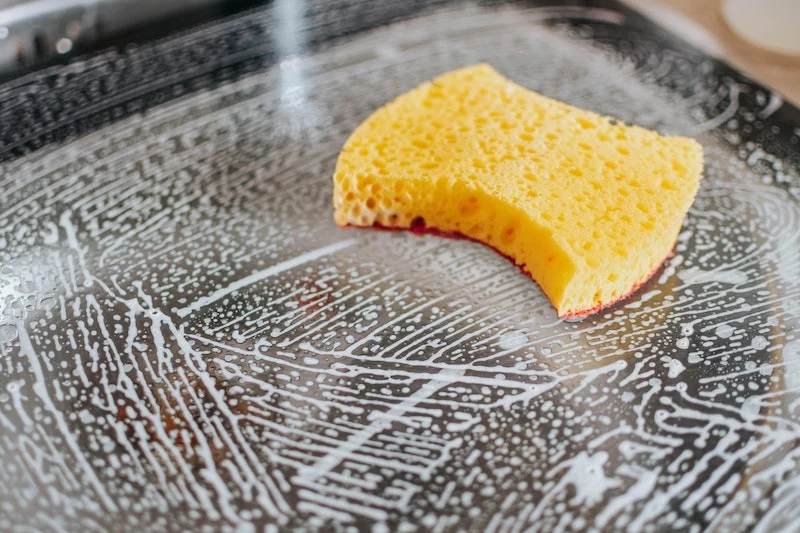
3. Streak-Free Glass and Mirror Cleaner
The secret here is rubbing alcohol, which evaporates quickly and takes all the streaks with it.
- Recipe: In a spray bottle, mix 1 cup of 70% rubbing alcohol, 1 cup of distilled water, and 1 tablespoon of white vinegar.
- Technique: Use two microfiber cloths. Lightly mist the surface, then wipe with the first “wet” cloth. Immediately after, use the second, completely dry “polish” cloth to buff it to a perfect shine. Don’t let it air dry!
- Shelf Life: This one lasts for months. Just give it a swirl before using.
- A Pro’s Secret: Never clean windows when they’re in direct, hot sunlight. The cleaner will evaporate before you can wipe it, guaranteeing streaks. I always aim for the morning or a cloudy day.
Specific Fixes for Tough Problems
Some jobs need a special approach. Here’s how I tackle the worst offenders.
Cleaning a Baked-On Oven (Fume-Free!)
Commercial oven cleaners are incredibly toxic. This method is fume-free, but you need one thing: patience. Plan to do it overnight.
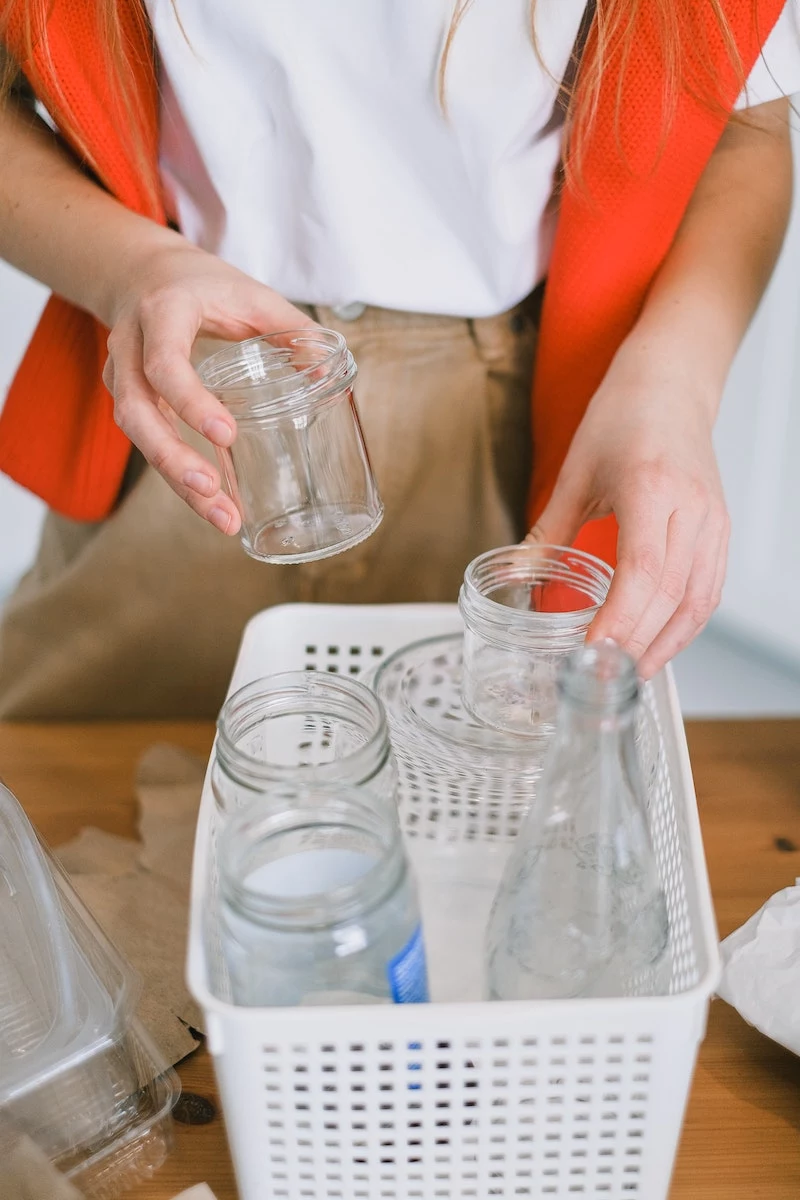
- Make sure the oven is completely cool.
- Mix about 1/2 cup of baking soda with a few tablespoons of water to create a thick, spreadable paste.
- Wearing gloves, coat the entire inside of your oven with the paste (avoid the heating elements). Get it on there nice and thick. It’ll get messy and brown; that’s normal.
- Close the door and let it sit for at least 12 hours. The paste is slowly softening all that gunk.
- The next day, use a plastic scraper to remove the dried paste, then wipe out the rest with a damp cloth.
- Put some white vinegar in a spray bottle and spritz any remaining residue. It will fizz, helping to loosen the last bits. Wipe clean with a fresh damp cloth until it’s all gone.
Restoring Grout and Fighting Mildew
Dingy grout makes an entire room look grimy. This paste uses the power of hydrogen peroxide to brighten it back up.
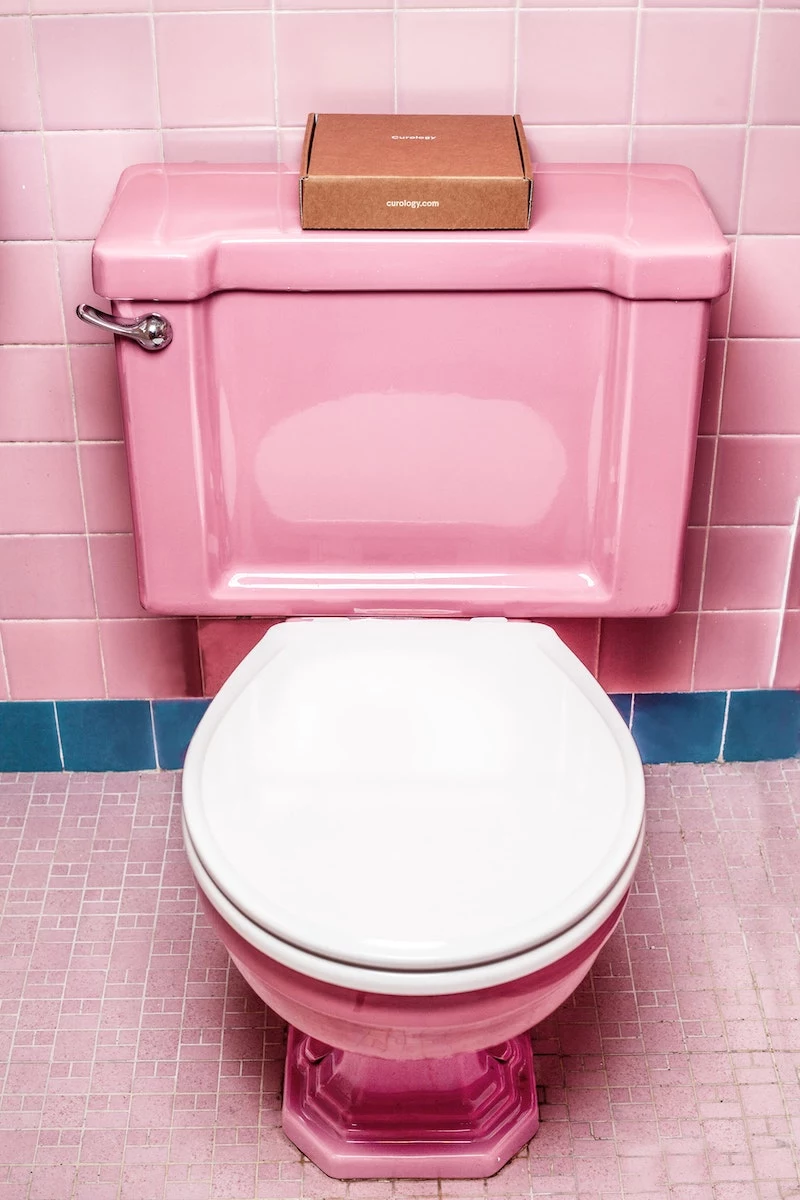
- The Paste: Mix 1/2 cup of baking soda with enough 3% hydrogen peroxide to form a toothpaste-like consistency.
- The Method: Use an old toothbrush to scrub the paste into the grout lines. Let it sit and bubble for 10-15 minutes, then scrub again and rinse thoroughly with water.
- A Note on Mold: This is great for surface mildew and stains. But if you see black mold that seems to be coming through the grout, that could signal a bigger issue like a water leak. That’s a job for a professional.
Clearing a Slow Drain
This is for routine maintenance on a slow drain, not a complete blockage (for that, you need a snake or a plumber).
- Pour a kettle of boiling water down the drain.
- Dump in 1/2 cup of baking soda.
- Follow it with 1/2 cup of white vinegar. It will fizz up—cover the drain with a plug to keep the reaction down in the pipe.
- Let it sit for 30 minutes.
- Flush it all out with another kettle of boiling water.
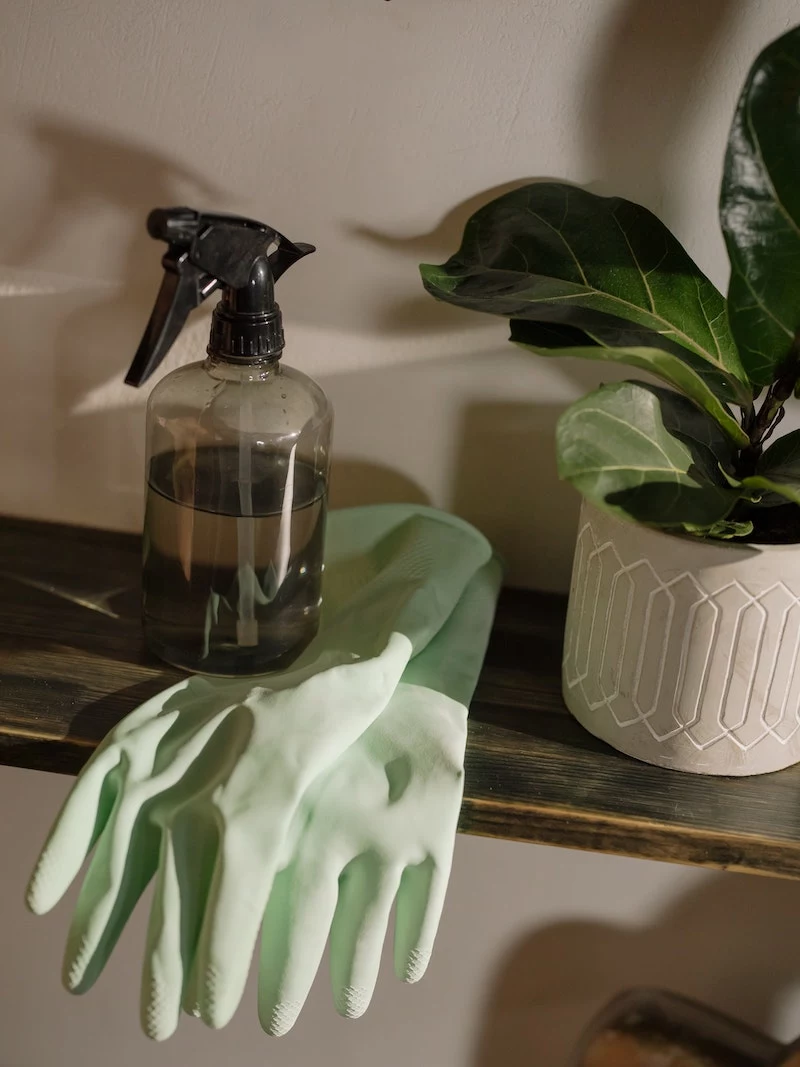
Final Thoughts on Safety and Success
Even though these are simple ingredients, you’re still doing chemistry, so a little respect is in order.
- Label Everything. I can’t say it enough. A permanent marker is your friend.
- Never Mix Blindly. The most critical rule: NEVER, EVER mix vinegar with chlorine bleach. It creates toxic chlorine gas, which can be deadly. You also shouldn’t mix hydrogen peroxide and vinegar in the same bottle, as it creates a corrosive acid. Use them one after the other (like rinsing with vinegar after using the peroxide paste), but don’t pre-mix them.
- Know Your Limits. These recipes are amazing for everyday cleaning. But for major mold problems or situations that need hospital-grade disinfecting, call a certified pro. It’s always cheaper than fixing a disaster.
Making the switch to my own cleaners was one of the best decisions I ever made. It gives me total control, saves a ton of money, and offers peace of mind. It takes a bit more thought than just grabbing a bottle off the shelf, but the sparkling, healthy results are more than worth it.
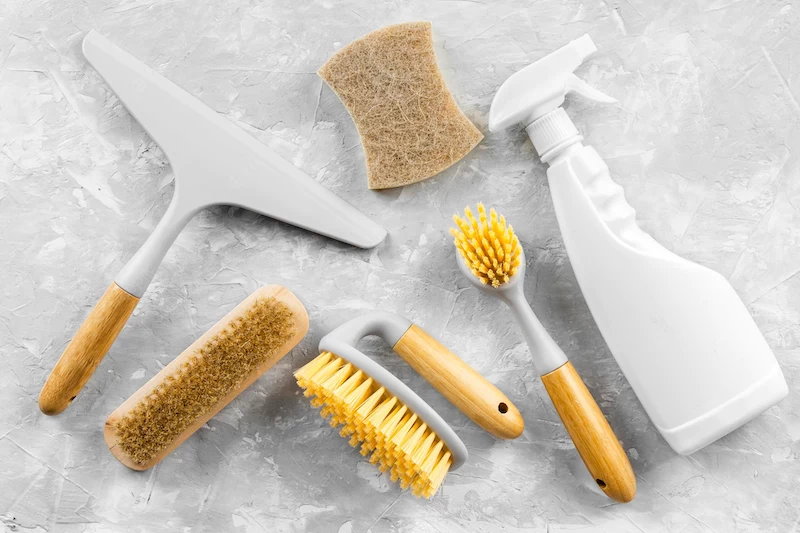
Inspirational Gallery
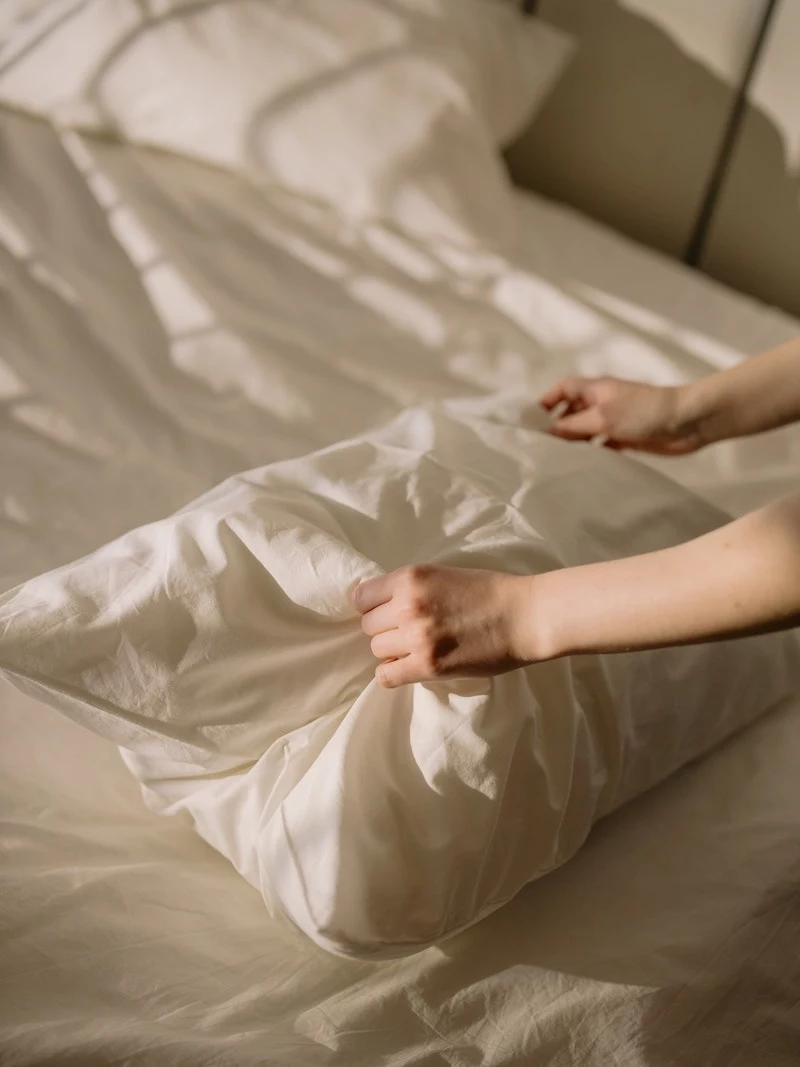
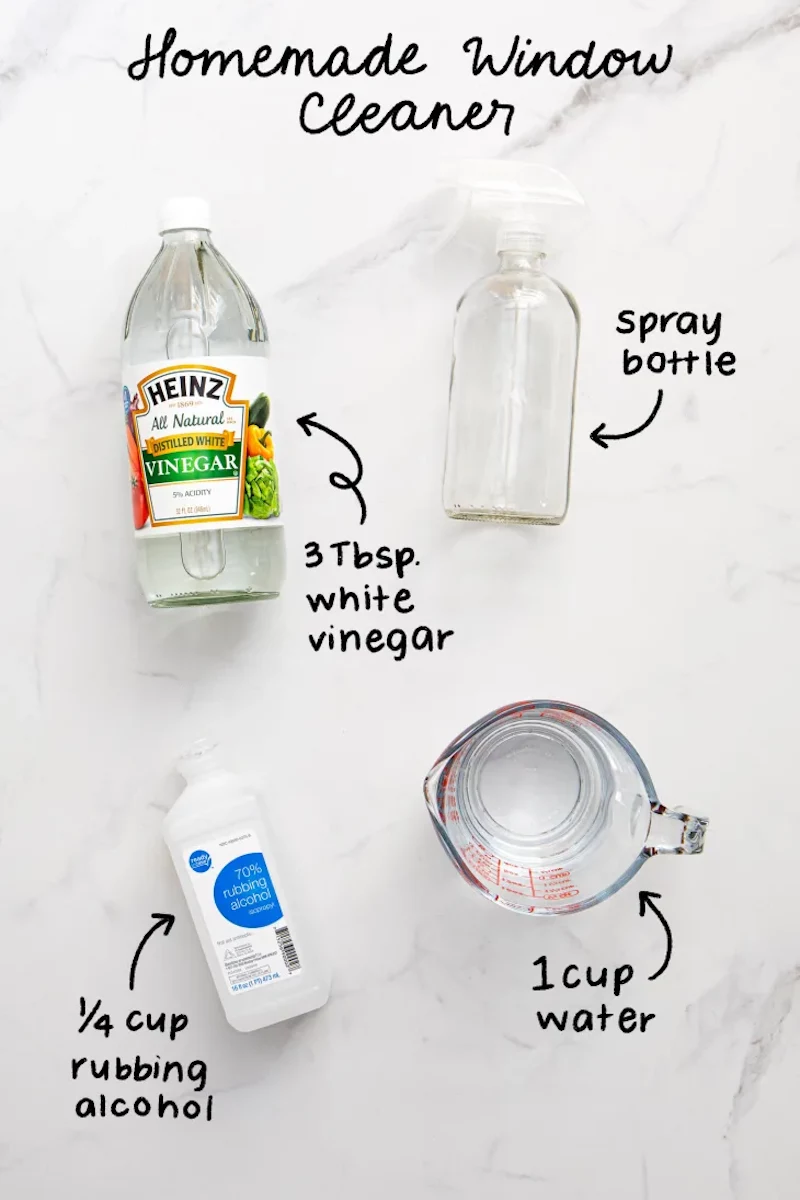
The U.S. Environmental Protection Agency (EPA) has found that concentrations of many volatile organic compounds (VOCs) are consistently higher indoors (up to ten times higher) than outdoors.
Those aren’t just factory emissions; they’re often the result of everyday products, including many commercial cleaning sprays. By switching to DIY cleaners based on vinegar, water, and essential oils, you’re not just scrubbing surfaces—you’re actively improving your home’s indoor air quality, one spritz at a time.
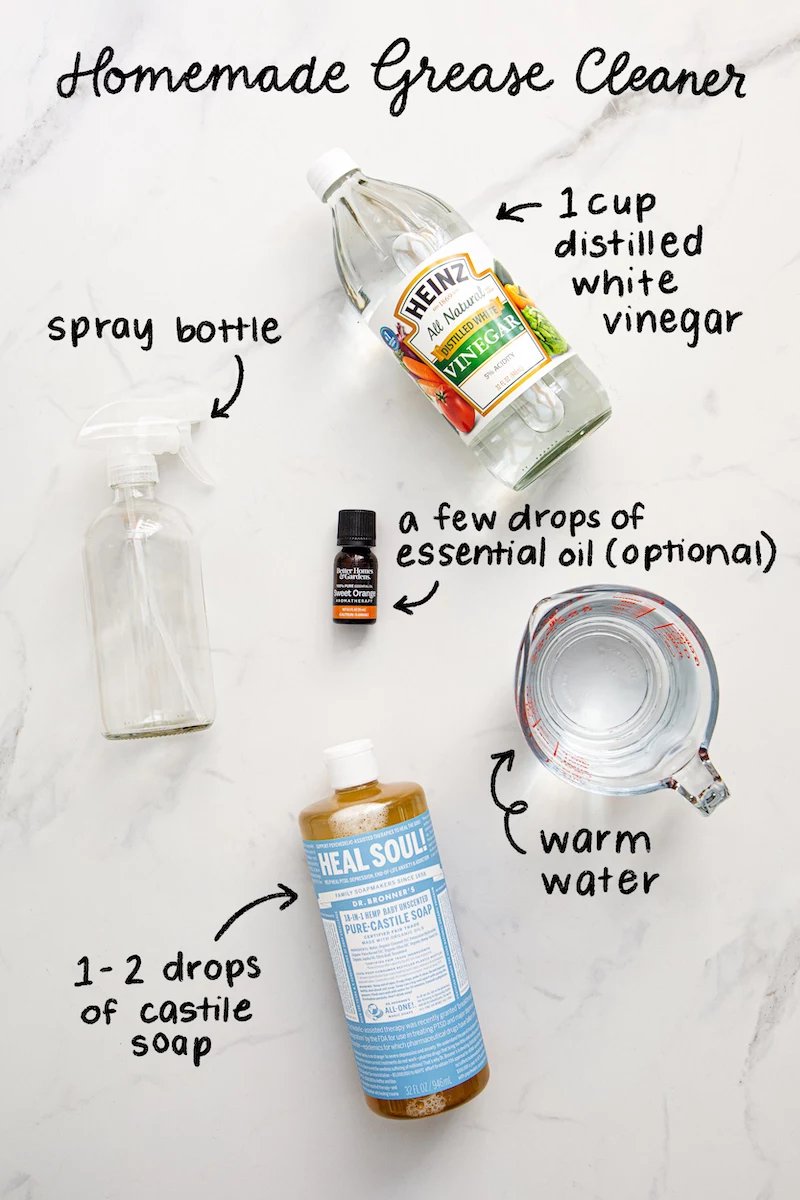
Wondering how to bring a natural, warm glow back to your wood furniture without using waxy, silicone-based sprays?
It’s surprisingly simple. For a nourishing wood polish, mix 1/4 cup of olive oil with 2 tablespoons of distilled white vinegar and 10 drops of lemon essential oil in a small bowl. Dab a soft, lint-free cloth into the mixture, wring it out well, and polish your wood surfaces following the grain. The oil conditions the wood while the vinegar gently cleans, and the lemon leaves a fresh, bright scent.
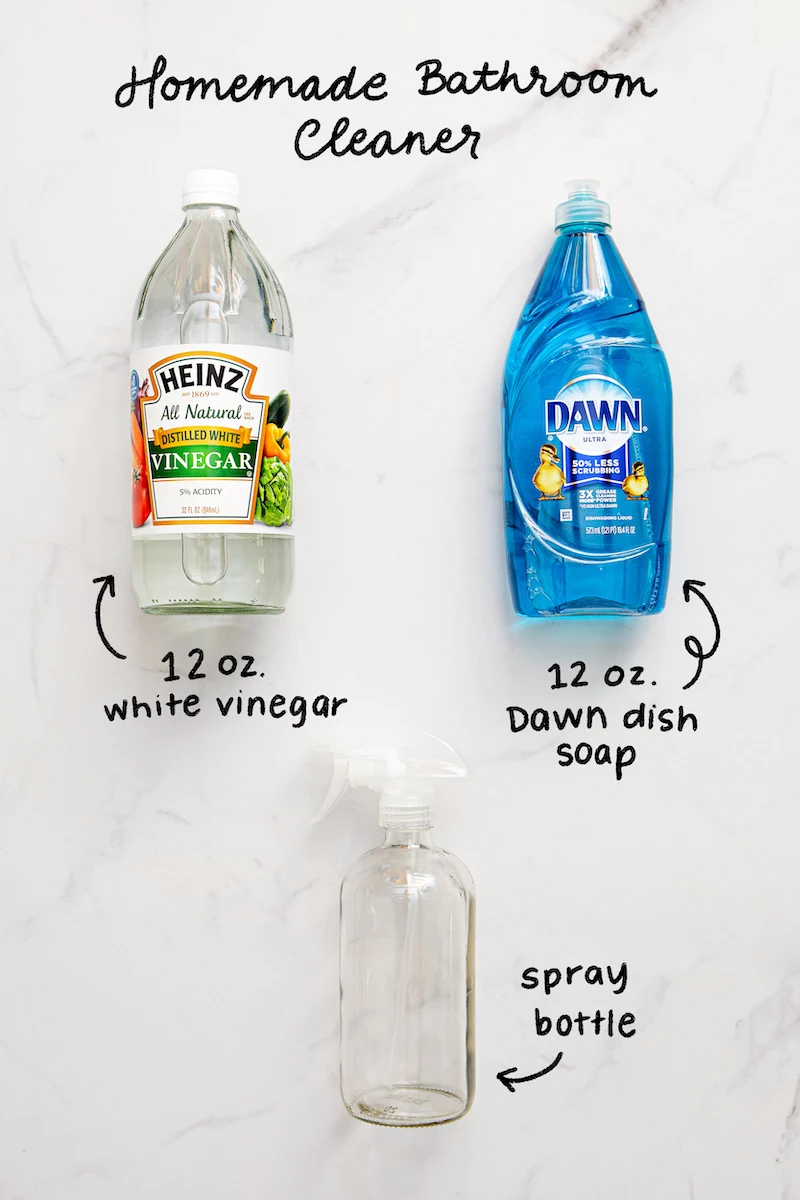
The one mistake every new DIY cleaner makes: Mixing vinegar and castile soap directly in a spray bottle. While both are cleaning powerhouses, they don’t play well together. The acid in the vinegar reacts with the soap, causing it to ‘unsaponify’ and curdle. Instead of a powerful cleaner, you get a clumpy, filmy residue that’s less effective and can clog your spray nozzle. Use them separately for best results!
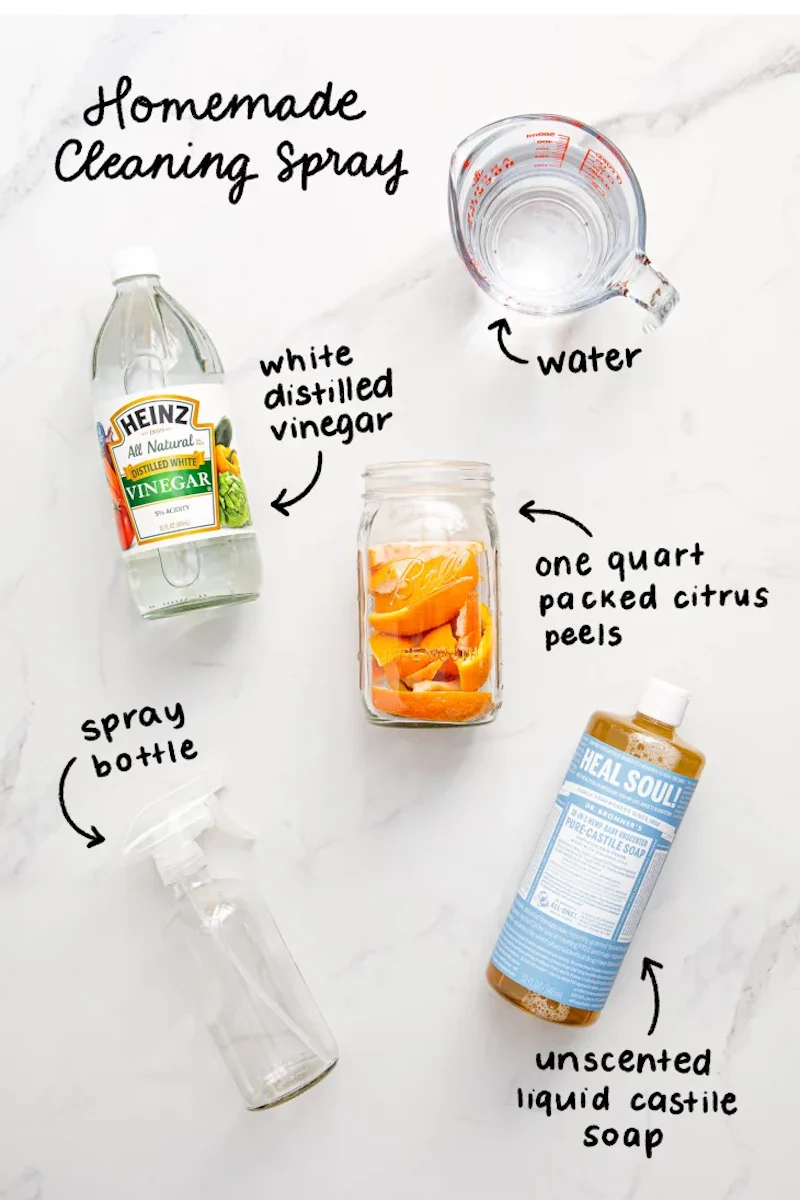
Beyond just clean, think about the scent and mood you want to create. Essential oils are your secret weapon for turning a cleaning chore into a sensory experience. Brands like Plant Therapy or NOW Foods offer high-quality, pure oils perfect for the job.
- For the Kitchen: Use Lemon or Sweet Orange oil in your all-purpose spray. Their citric properties help cut through grease and leave a crisp, energizing scent.
- For the Bathroom: Add a few drops of Tea Tree and Eucalyptus oil to your scrub or spray. They have powerful antimicrobial properties and create a spa-like atmosphere.
- For Relaxation: When cleaning bedrooms or living areas, a hint of Lavender or Chamomile in your linen spray can promote a sense of calm.
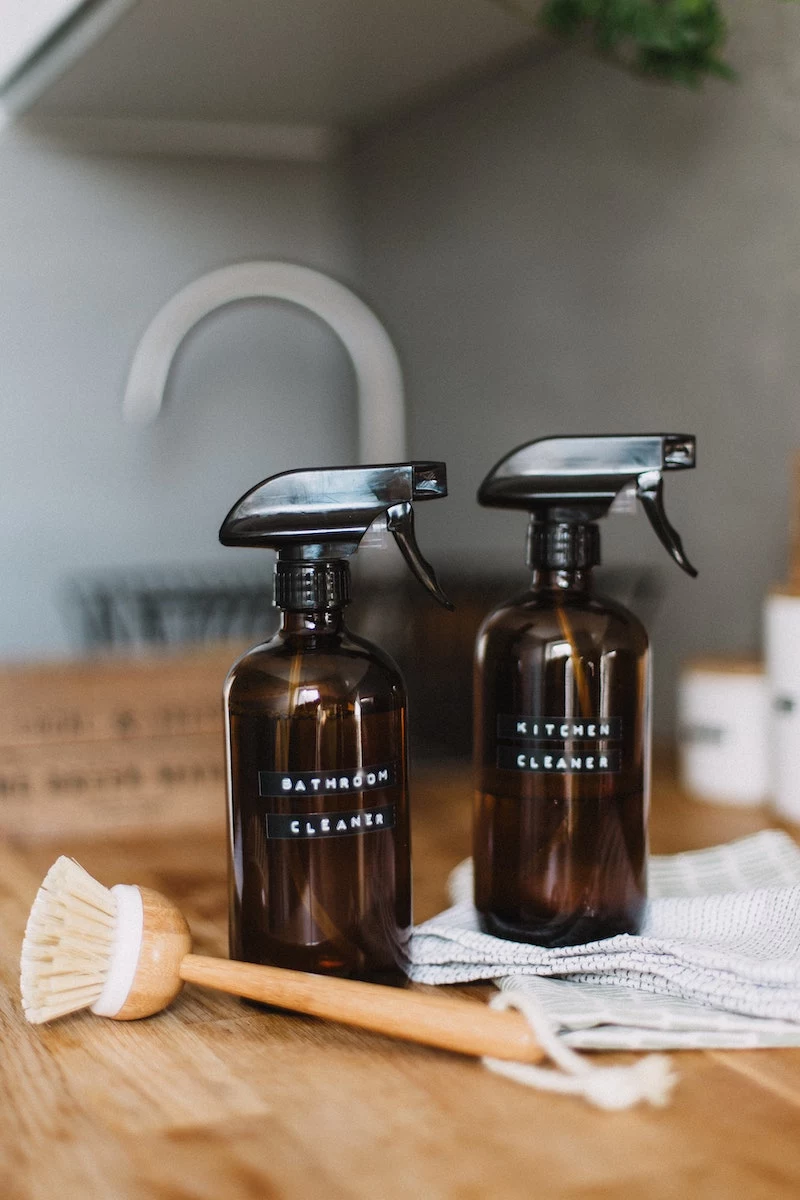
Microfiber Cloths: Their tiny, split fibers are masters at trapping dust, dirt, and bacteria with just water, making them a perfect partner for your DIY sprays. They excel at polishing mirrors and chrome for a streak-free shine.
Natural Cellulose Sponges: Made from wood pulp, these are highly absorbent and biodegradable. They are ideal for tackling soapy messes, like scrubbing a sink with a baking soda paste or wiping down counters after using a castile soap solution.
For a complete eco-friendly toolkit, having both on hand allows you to use the right tool for the right job, reducing product waste and effort.
- Protects light-sensitive ingredients like hydrogen peroxide and essential oils from degrading.
- Offers a durable, reusable, and plastic-free alternative to commercial spray bottles.
- Creates a beautiful, uniform look for your homemade cleaning kit under the sink.
The secret? Storing your creations in amber or cobalt blue glass spray bottles. You can find them easily from online retailers or eco-focused shops like Grove Collaborative, instantly elevating your DIY setup from functional to fantastic.










